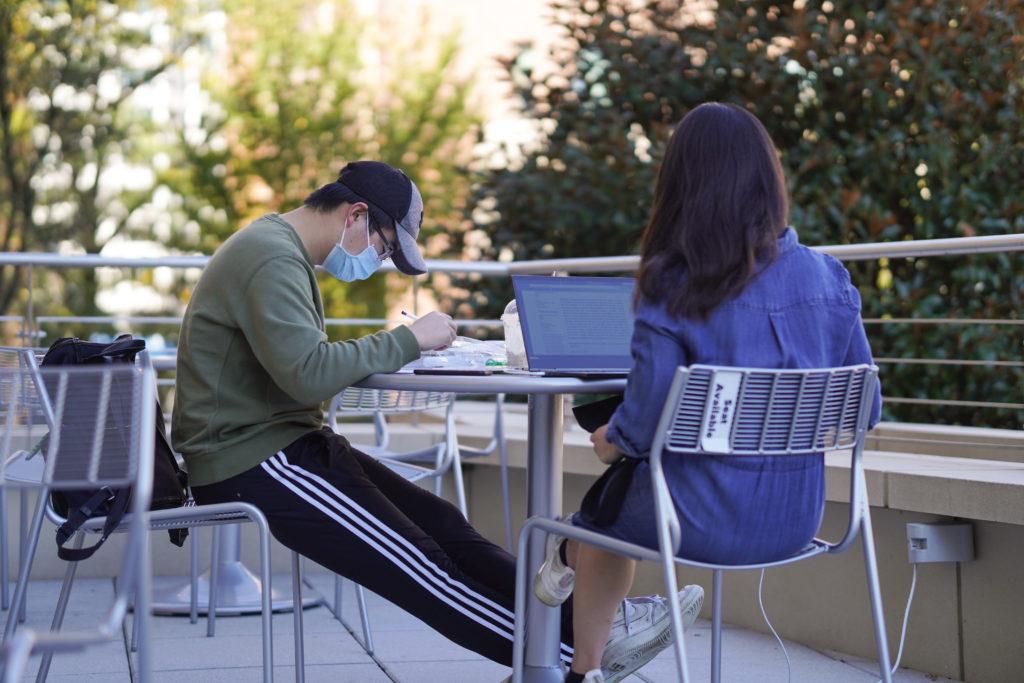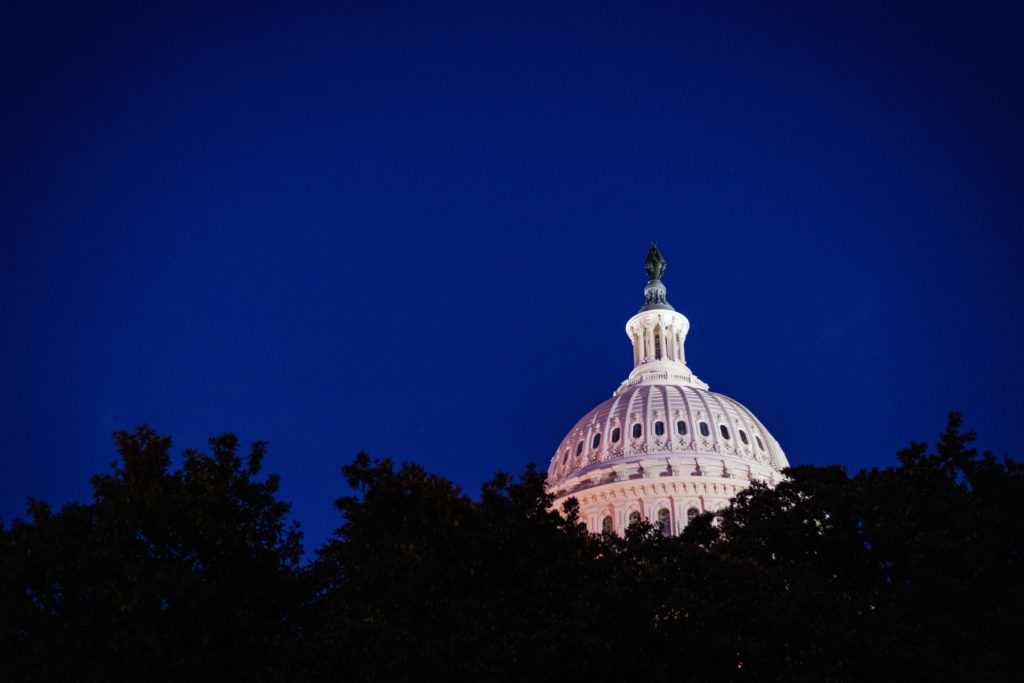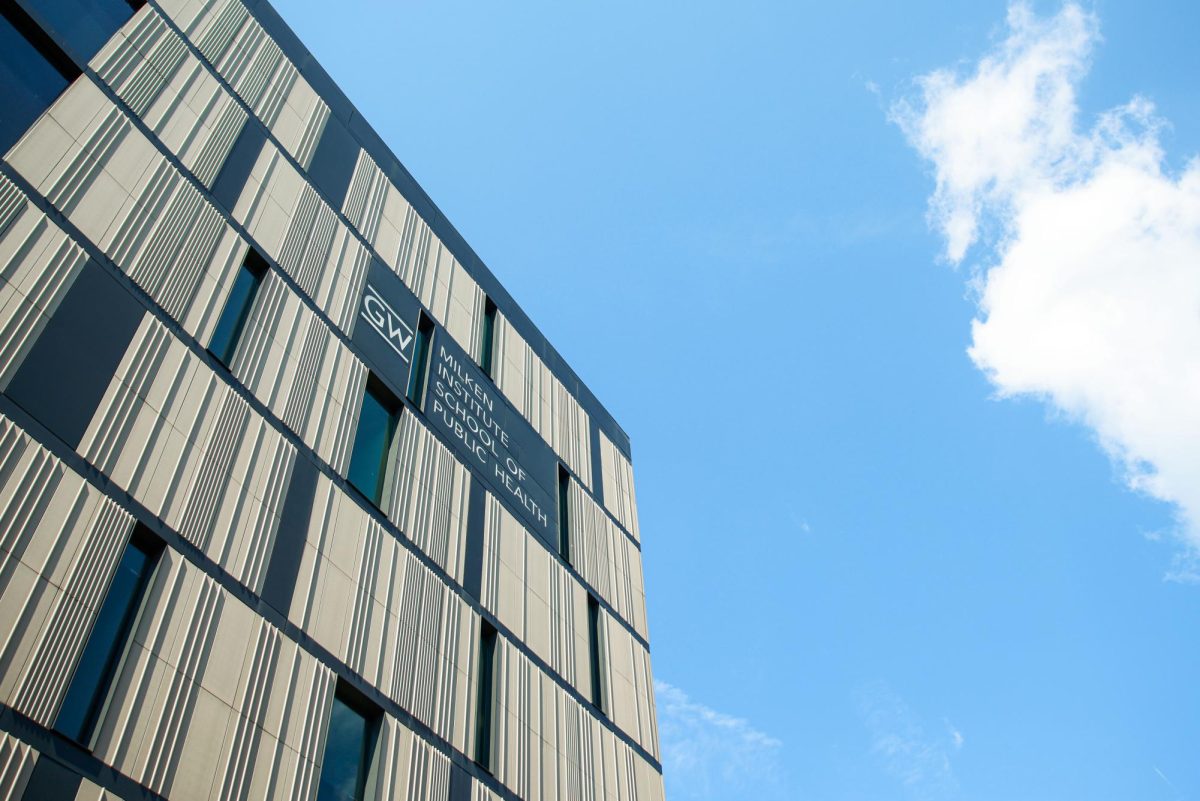Sophomore Lydia Melka spent five days sleeping on her living room couch this month while her roommate, showing symptoms for COVID-19, waited to secure a testing appointment.
Melka’s roommate tried scheduling a test for symptomatic students after experiencing increased congestion that week, but after an influx of students started booking appointments, the two roommates faced extended scheduling delays for testing. Melka, who was also concerned her roommate could transmit the coronavirus, couldn’t secure an appointment scheduled for sooner than ten days away.
Hoping to attend her student organization meetings for the upcoming week, she paid $20 to receive a test from Georgetown’s Same Day Testing clinic before testing negative for the virus.
“It was a little bit of a difficult situation because my roommate was getting really sick,” Melka said. “She was struggling to figure out whether she was congested or whether she had lost her smell. We were very concerned.”
Melka is one of more than ten GW community members who said they’ve struggled with testing delays lasting for more than a week after the University doubled the required testing frequency to twice a month earlier in September. Ray Lucas, the University’s COVID-19 coordinator, said officials recently increased the number of Foggy Bottom appointments to 2,600 tests per day to accommodate for the new biweekly testing requirement.
Lucas said officials have also doubled the number of onsite testing days in the University’s Alexandria, Arlington and Rockville centers.
“We think that with the increased number of testing slots, that community members will have an easier time finding an open appointment moving forward,” Lucas said in an email.
As part of the new policy, officials said they will require testing for vaccinated students, faculty and staff twice a month, increasing frequency from their previous monthly testing requirement.
Lucas said the number of coronavirus testing appointments available per five-minute window varies based on the time of day. He said there are eight appointments available every five minutes in “less busy and desired” hours of the day like 6 a.m. and between 23 and 25 appointments every five minutes at times like 11 a.m.
He said officials understand that students have faced difficulties scheduling testing recently, and the University is “finalizing details” about access to increased testing.
He said many students have booked two or three appointments a day each time they log in to schedule a test, hoping that they will be available for one of the time slots. He said officials record “no shows” at more than 100 appointments a day.
“These behaviors effectively block out other community members in getting an appointment,” Lucas said.
Lucas declined to say how additional coronavirus tests will affect staffing levels at testing centers.
In a followup, officials were not immediately available to comment about students who have bought their own tests after facing testing delays.
Sophomore Matt Kaplan said he tried to schedule a coronavirus test on the Wednesday after the University’s update about testing frequency, but he couldn’t find an available slot until Monday.
“I was definitely frustrated,” Kaplan said. “Testings are the key to our safety, so why do I have to wait until Monday?”
Kiran Sharma, a sophomore studying international affairs, said he tried to schedule a coronavirus testing appointment last Tuesday, but no tests were available for a week.
Sharma said he also tried to schedule a test on the first Friday of this month when he lost his taste and smell. He said he eventually tested negative after buying a take-home coronavirus test from CVS Pharmacy after not being able to secure an appointment until Tuesday or Wednesday.
Prices of take-home coronavirus tests at CVS Pharmacy range between $24 and $125.
“They definitely can’t manage that because the tests are a week delayed, and at that point, if you’re going out and you can still go to classes and everything, I don’t really see a point,” Sharma said.
Mark Ralkowski, an associate professor of honors and philosophy, said he tried to schedule a coronavirus test last week but couldn’t find an available test until five or six days out. He said he thinks he won’t be able to meet his testing deadline to receive campus clearance, which would remove his tap access from campus buildings.
“My hunch is that the information about the Delta variant has made everybody feel alarmed, and so they’ve wanted to increase testing and they made the requirement before they had the necessary capacity,” he said.
Ralkowski said he was impressed by the availability of testing appointments in August, and the testing center can “catch up” with the uptick in the demand for tests in “a matter of time.”
Experts in public health said a university’s testing protocol depends on the number of breakthrough cases and the vaccination rate on campus.
About 97 percent of students are fully vaccinated, two percent received exemptions and one percent is non-compliant with the vaccine requirement as of Wednesday, University spokesperson Crystal Nosal said in an email late last week. The University faced a positivity rate of 0.29 percent this past week, according to the COVID-19 testing dashboard.
Jennifer Horney, the chair of the epidemiology department at the University of Delaware, said there are benefits in confining coronavirus testing data to University-owned centers but not at the expense of students having symptoms and no available tests. Allcare Family Medicine and Urgent Care, Medstar Health and Farragut Medical and Travel Care all provide coronavirus testing options near campus.
“There has to be a strong joint relationship between the local and the campus health center,” Horney said.
Amy Fairchild, the dean of The Ohio State University’s College of Public Health, said testing is critical to identifying and isolating infected individuals before they spread it to others.
“If you can isolate on Thursday instead of the following Monday, you eliminate three to four days during which that individual could spread the infection to others,” Fairchild said in an email.
Ajay Sethi, an associate professor of population health sciences at the University of Wisconsin-Madison, said frequent testing can be difficult for universities because tests are expensive and schools need to hire and train contact tracing personnel.
“There’s definitely the financial cost of the tests themselves and having laboratory capacity and personnel to process that many tests and to get results back in a timely way,” he said. “That’s not cheap.”
Alexandra Kicior and Isha Trivedi contributed reporting.








